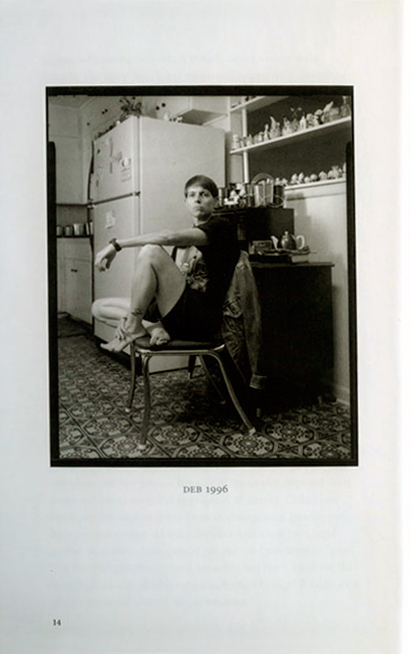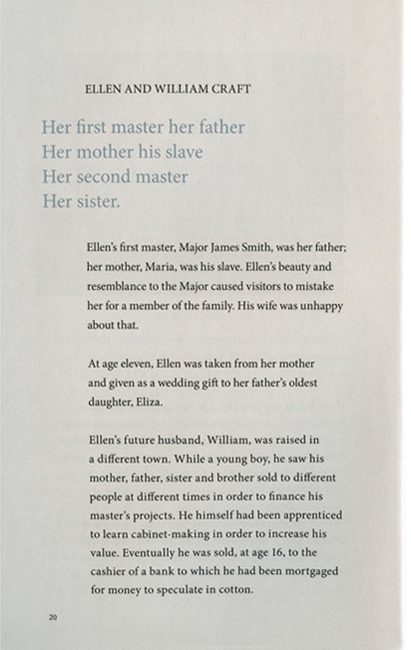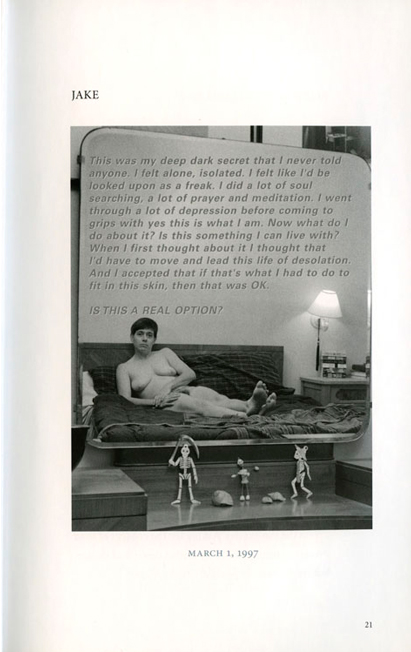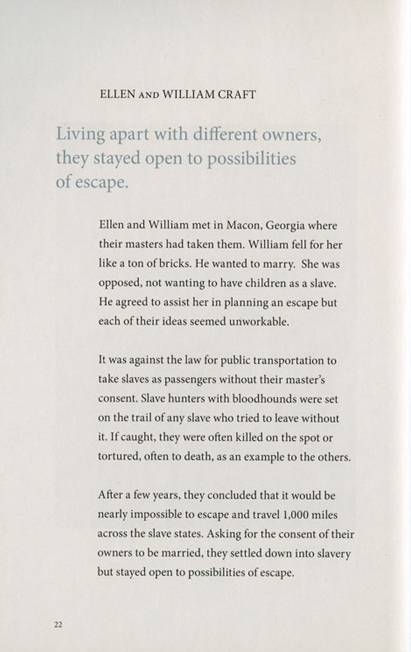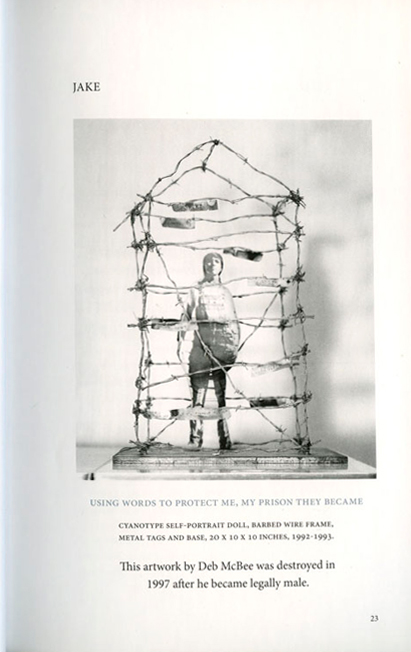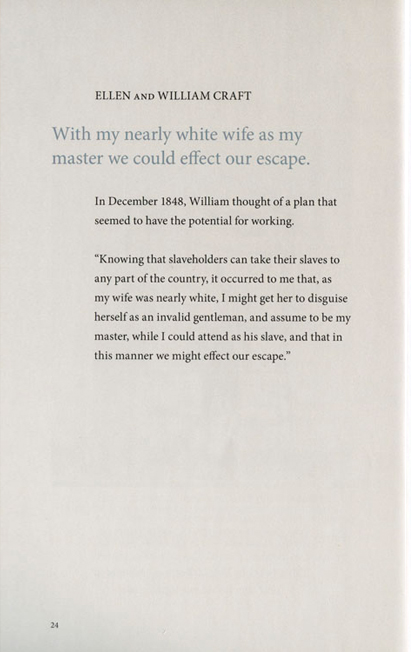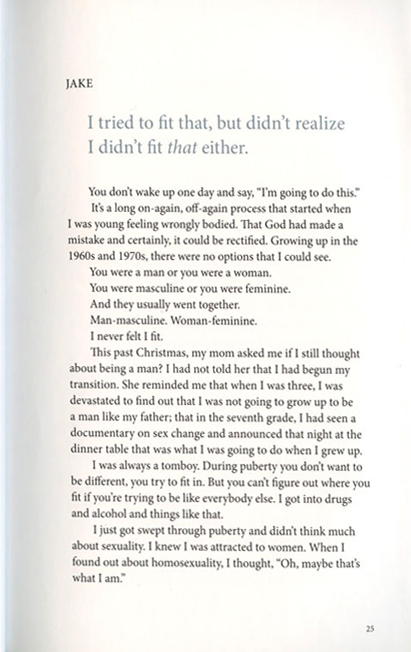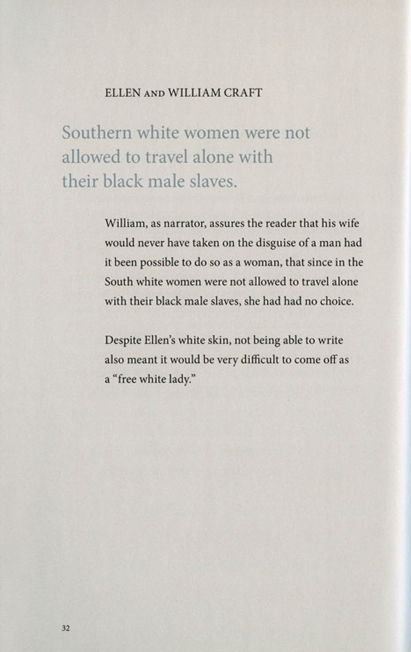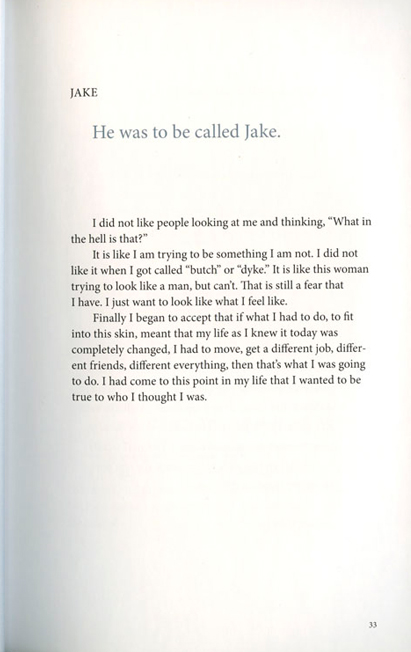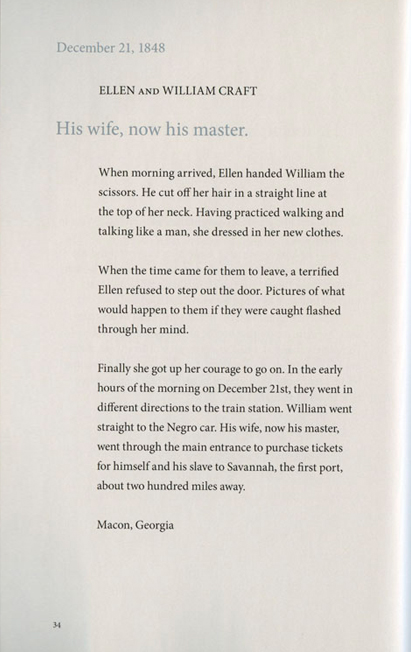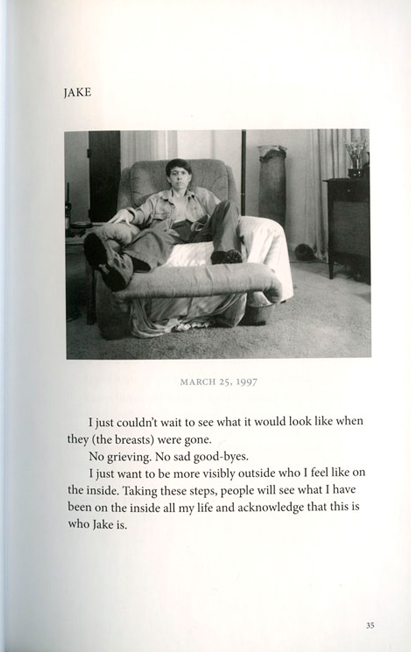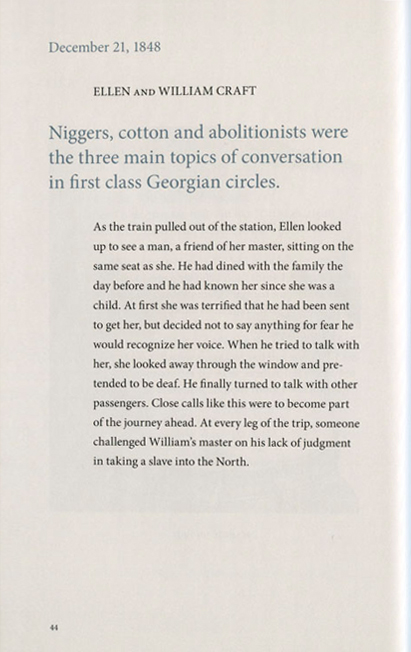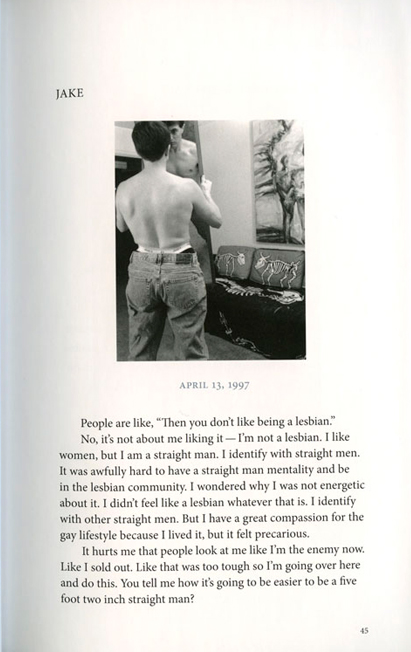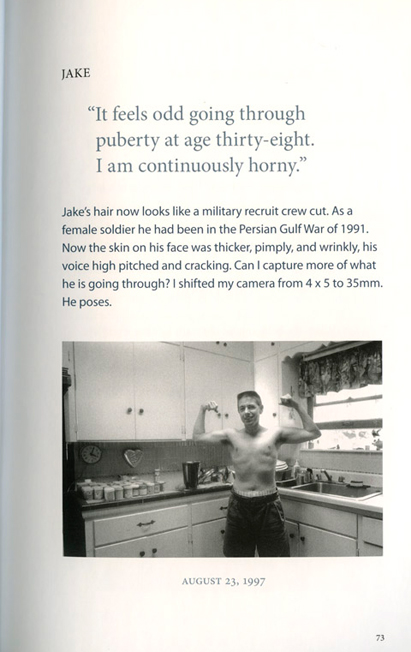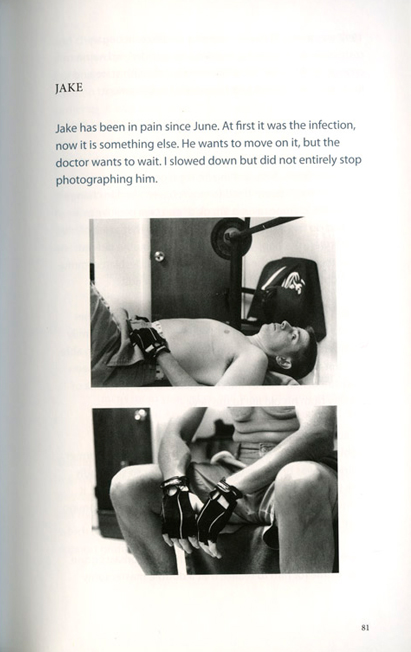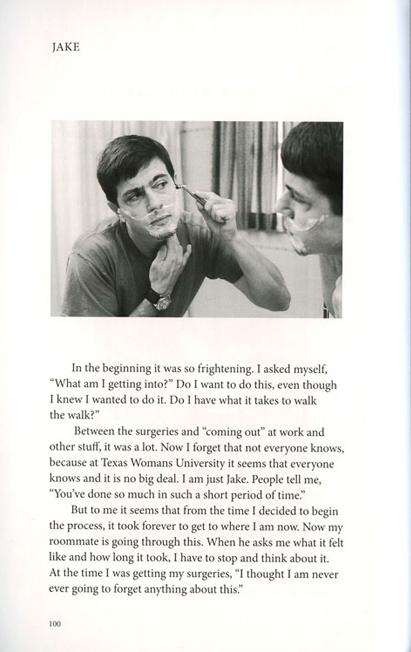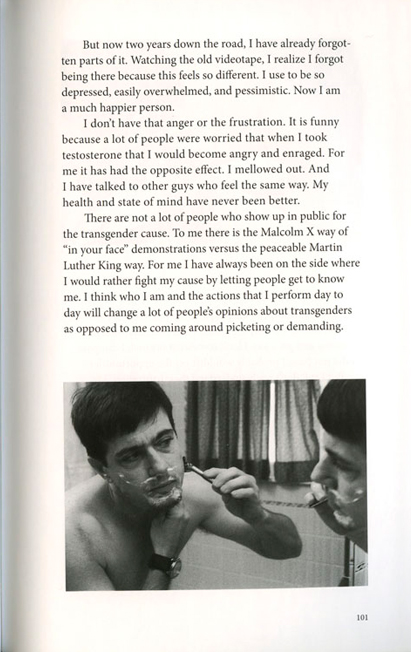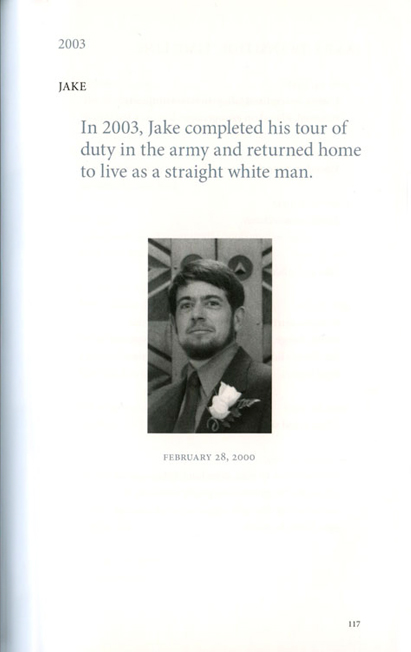 Philadelphia: Leeway Foundation, 2009. Edition of 1500.
Philadelphia: Leeway Foundation, 2009. Edition of 1500.
7.75 x 5″; 160 pages. Printed offset. Perfect bound. Paper illustrated wrappers. Includes essays by Carla Williams, Jake in Transition from Female to Male series, or, Through the Mirror and What Clarissa Found There and Silvia Roncucci, Women in Transition: From Female to Male (translated from Italian).
Wrongly Bodied relates the stories of Jake, a contemporary white male imprisoned in a woman’s body, as he transitions from female to male, and Ellen Craft, a 19th century black slave woman who escapes to Philadelphia from Georgia by passing as a white male slave owner. Working as staff support at a small woman’s college in Denton, Texas, and in the US Army reserves, Jake had been a female soldier in Operation Desert Storm in 1991. Sligh and Jake worked together over four years to document his journey. What results is a book of photographs and texts that take us inside what became a highly transformative journey for the photographed and the photographer.
Introduction: When Debra approached me about documenting her transition from female to male, from Debra to Jake, I felt conflicted by several personal dilemmas. It was a world that I knew next to nothing about. In my long career as an artist/photographer, I was always interested in social identity and the general human condition but did not want to be an advocate for any particular person or ‘speak’ for someone else.
In addition to the world of transitioning from one gender to another being unknown to me, Debra, herself had many questions: As a woman she had to dissolve, disintegrate, disappear and reinvent herself as a man despite feeling that she was already a man in a woman’s body – what would the journey be like? What if she failed to complete her transition? What if she didn’t like the person she was to become? Who would want to have such a person in their life?
A person’s decision to change gender is very difficult for many people to wrap their heads around. I trusted that working together with Jake on this project, I would develop the necessary identification with her life and struggles but my connection to his process came from an unexpected place for me. In my trying to understand Jake’s motivation for a gender change, I used, from my own social history, racial passing – as a parallel that could be thought of as something like it although it is not.
As I reflected, for over ten years, on my experience with the intensity of Jake’s transition process, the narrative of Ellen and William Craft’s successful escape from slavery to freedom by Ellen ‘passing’ as a white male, began to insert itself into my page layouts of Jake’s story. For the first time, I understood that Ellen Craft was passing as white and as a man. While Jake would never think of himself as passing as a man, I gained a deeper understanding of what it meant for Ellen Craft to present herself as a man in ante-bellum America.
In Wrongly Bodied, I place Jake’s story and the Crafts’ narrative side by side. No attempt was made to intermingle or align them, yet resonances between the two occur throughout. The insertion of the Craft’s journey from slavery to freedom has expanded the scope of the project and makes clear that the book is about Jake and it is also about me as the photographer.
Photographer Ellen Eisenman noted that, ‘The addition of the Craft’s narrative contributes to the book’s accessibility to people who have not been able to understand the social construction of gender and makes clear the documentary photographer’s process of observation, of really trying to see and understand from the subject’s point of view.”
A few randomly selected book pages are shown below
